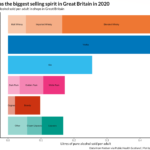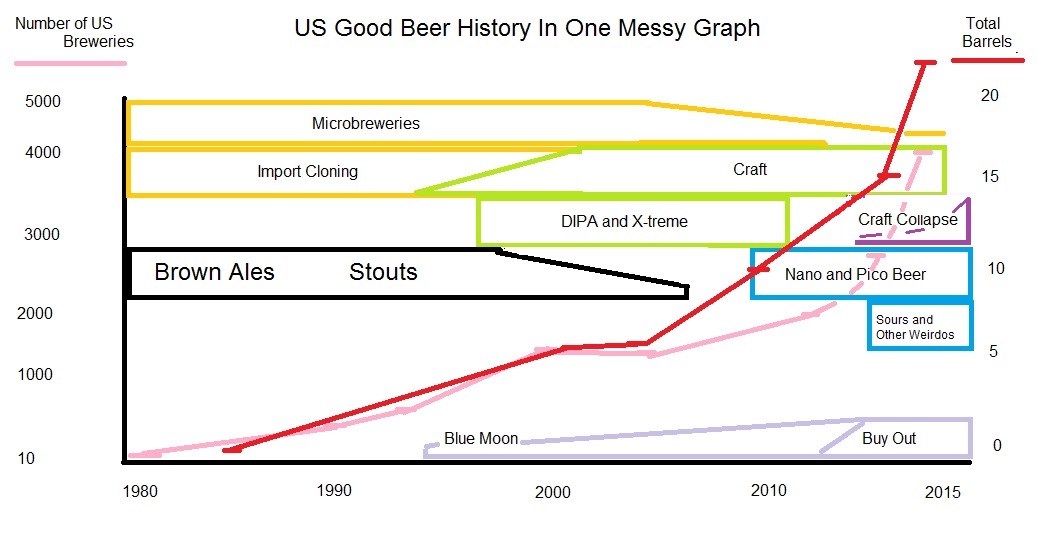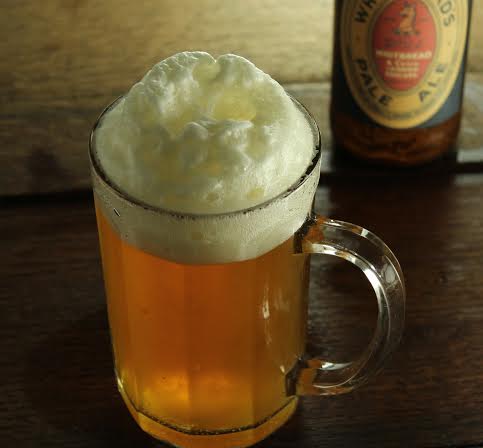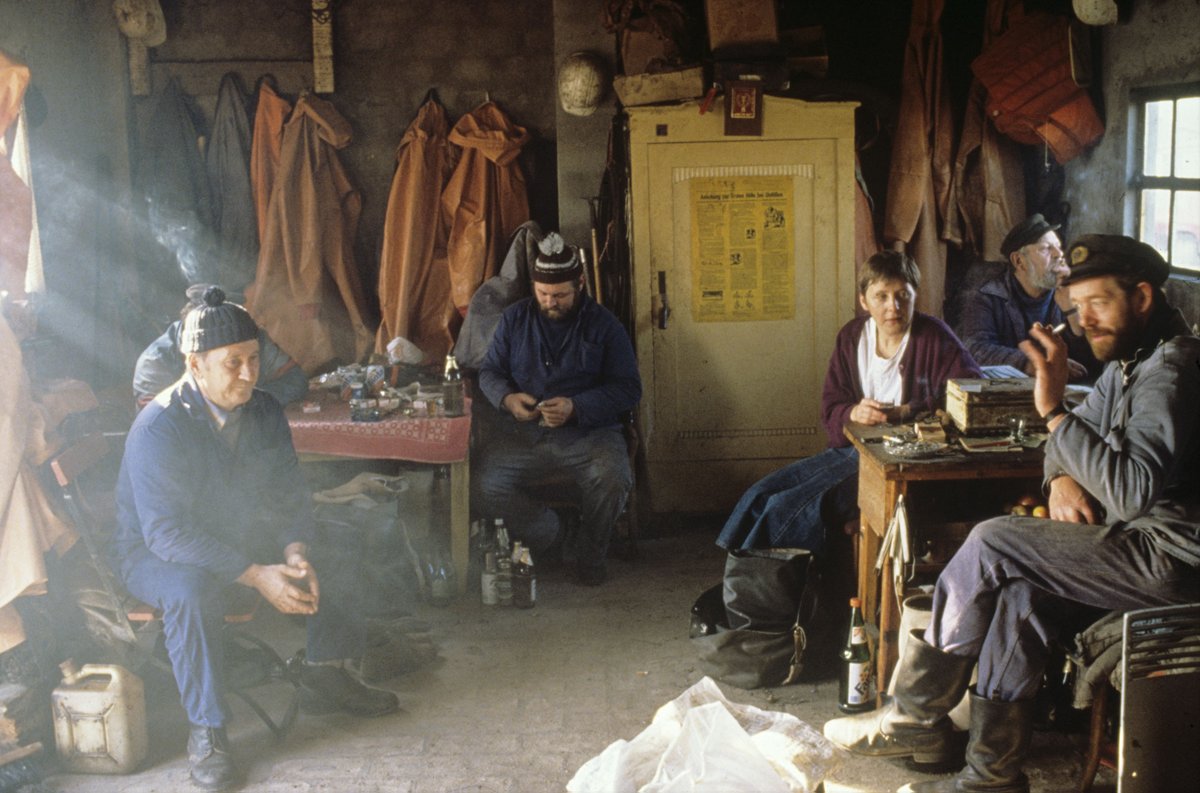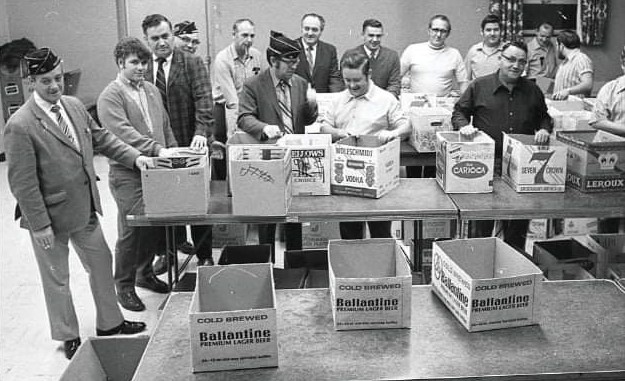 While we didn’t break the record of most snow in a century like Ottawa to our north did, I has to shovel snow five times on Monday to clear and keep the driveway clear. Not sure I would find, as a result, the idea of a pub with an outside men’s room would be wonderful. I mean I have heard of such things… but here? That doorless door there? It’d be filled with drift. Snow drift. Right up to that bracket to the left of the door frame there. Don’t fancy that. Chilly. Something something rhymes with chilly.
While we didn’t break the record of most snow in a century like Ottawa to our north did, I has to shovel snow five times on Monday to clear and keep the driveway clear. Not sure I would find, as a result, the idea of a pub with an outside men’s room would be wonderful. I mean I have heard of such things… but here? That doorless door there? It’d be filled with drift. Snow drift. Right up to that bracket to the left of the door frame there. Don’t fancy that. Chilly. Something something rhymes with chilly.
Well, perhaps speaking of which, the big news broke on Wednesday that Brewdog has apparently been falsifying documents submitted to the US government. As BBC Scotland found out:
Scottish beer giant Brewdog sent multiple shipments of beer to the US, in contravention of US federal laws, a BBC investigation has found. Staff at its Ellon brewery told the BBC they were put under pressure in 2016 and 2017 to ship beer with ingredients that had not been legally approved. One US-based importer said they had been deceived by Brewdog. In a social media post on Wednesday, Brewdog CEO James Watt admitted to “taking shortcuts” with the process.
Having practiced low level criminal defense law for about a decade, it is always great to see a suspect get chatty like that. What makes it really quite amazing is how §70.331 of the Fed Reg Title 27, Chapter 1* related to the Alcohol Tobacco Tax and Trade Bureau of the US Treasury Department provides that:
Any person who willfully delivers or discloses to any officer or employee of the Bureau any list, return, account, statement, or other document, known by him to be fraudulent or to be false as to any material matter, shall be fined not more than $10,000 ($50,000 in the case of a corporation) or imprisoned not more than 1 year, or both.
But that right up there, as a pal says when I point to a by-law at work… “that’s a law!” Which it is. Which allows for a year in jail. Yikes. Dumbasses. No wonder Dan Shelton, former US importer and man whose name became a new verb, stated that he had been deceived: “They did lead somebody in my company to falsify documents.” Wow. To think Brewdog once sponsored this blog… I am so embarrassed. I would have thought Prince Andrew’s situation might have been a warning to Brits who are a bit deluded about their proper place. No, apparently not. Perhaps it was a plan to distract folk from their incredibly retrograde insensitive and perhaps even Neanderthal-esque approach to promoting better mental health… you know, when they weren’t, what did the BBC write in that article… running a model workplace… what was it?
One former worker told the investigation: “The pressure was enormous. ‘Just make it happen’, that was the culture. It was clear to us this was coming from the top – from James [Watt].”
Elsewhere and hardly at all as suspect, Stan has been on a bit of a roll, posting five times at his space. He may be making a point of some sort. He wrote this under the heading “#nottwitter 04“:
Can somebody point me to a blog post, an academic paper, something from the New York Times, wherever, that provides insight into what might be called unhealthy nostaglia and the ramifications? And how might it relate tradition as a trap?
I am not sure what is up. Is there a pattern? Whatever it is, it may be that this post’s point is found in the next post, the Monday beer links: “when we buy into that nostalgia, it might be best to stop and consider what we are longing for.” Isn’t what nostalgia what beer is for? Remembering? Daydreaming? Hmm. Then – get this – then Stan hid a clue in the title of his next post: ethyl octanoate. Ethyl. Octanoate. Think about it. Anyway, it terms of the speed of nostalgia, it moves fast with craft beer. Four Pure and Magic Rock are in a “process“:
We want to update you on some news. As we go through this process, our priority remains our superb team and brewing great beers.
Better a process than a legal process, eh? The Grocer has deets:
“While no decisions have been made, we need to determine how to best set Magic Rock and Fourpure up for success in the coming years. Our team have been informed of the review and we are committed to supporting them through this time.” Fourpure has struggled to make headway in the supermarkets, despite the huge surge in alcohol sales over the course of the pandemic…. In contrast, Magic Rock’s off-trade volumes rose 125.4%…
Well! As with the news last week about the Aussie wine guys buying up US craft, the news about the Aussie beer guys going wobbly on UK craft is par for the course. Dust in the wind. Chose your pop prog song title from the mid to late 1970s. That is what it is.
Thinking about thinking, Ron reflected on the year ahead this week in terms of his own mobility:
Plague permitting, I’ve a few trips planned and a couple of others pencilled in. Corona is a real blessing to travellers. The internet had made travels far too simple. The virus adds a delightful randomness to the proceedings. Like planning a European tour in the summer of 1918. Every time I book a flight I wonder: “What are the chance of me actually taking it?” Nothing is more thrilling than checking the internet until the second before you leave for the airport that the flight hasn’t been cancelled. Or wondering if you’ll be let out of the country once you reach your destination. I love the Phineas Fogg feeling the uncertainty brings.
All this uncertainty. Is that the word of the month? I bought a ticket to a CNY beerfest this week at Craig’s urging. Not sure I see how I could ever go to it but it is at least four months off and I suppose I could rent a camper van and look at people out the window. Now he tells me it’s Mothers Day weekend. Great.
Conversely to that fest, there is as much to learn from a poorly made or poorly thought out beer. Matt is right. Don’t be a jerk. But also don’t be fooled twice. That’s what got us in this mess.
The Beer Nut found perhaps the dullest beer ever.
Retired Martin found a micropub based the theme of the group The Jam. I was their only fan in high school. Until my pals listened to my records. Not sure even I would stay long.
A few reviews of the ABInBev TV promotional show, Beer Masters, have come in. Boak and Bailey added to Ed‘s observations this week:
Perhaps, however, they could have spent less time on the somewhat laboured descriptions of what makes an Abbey beer, or a pilsner, and told us a bit more about the contestants’ kits. We could see some interesting gadgets and arrangements that were never really discussed. If the aim is to spark a home-brewing revolution, as was suggested at a couple of points, then this probably won’t do it.
Good point. This is the sort of TV that does not interest me but at least it appears that a bit of big brewery money has made for a show that is actually not dreadful. Remember that horrible show produced as an advertising vehicle for Dogfish Head twelve and a half years ago? Of course you don’t as most of you were still in elementary school back then. That show was absolutely dreadful. Note: it was also called Beer Masters.
Somewhat related in the sense of horrible US craft beer messaging. Jeff considered the limits of independence this week with yet another tale of yet another takeover:
This isn’t a problem of the Brewers Associations’ making. It’s a structural feature of the beer industry in the US. It is also a worrying development, an echo of an earlier era when consolidation blighted the industry. What does it say about how we regulate the sale of beer in the US that the most successful start-up breweries eventually have to sell out to giants to survive? Is this the world we want to live in and, critically, what changes would allow those larger regional breweries to compete?
I can’t really agree that this is worrying. I mean if you are worrying about this you must have a pretty worry-free life. The idea of the “independence” of craft beer was dumb in 2009, in 2012, in 2015, in 2016 and still is today. See what I wrote in six years ago under that 2016 link?
Recently, the Boston Globe profiled private equity firm Fireman Capital Partners, the investment folk behind the expansion of Oskar Blues and the cash injection into Florida’s Cigar City Brewing. You think those guys are shaking in their boots over the prospect of a rival fund based on Stone’s ethos? Hardly. The experienced private equity players will out bid and out run their deals. It’s their business, not a hobby or a faith-based act of grace.
Money knows what money is about. Craft beer is about making money. Ask the Aussie wine guys. Unless it is about Berlin. Then craft beer is not about making money. Elsewhere and far more pure of heart, Lars came to a realization this week:
That feeling when you sit down to summarize the development of Norwegian brewing processes and the process of explaining forces you to realize that for 3/4 of the time people have brewed beer in Norway there is zero knowledge of how they did it. No evidence, no theories, nothing.
I might add that we should always be alive to the other 1/4 being 3/4s correct, too. That is the issue with all histories which is why it comes in a plural. But I expect this to spur on even more of his excellent and single-handed research.
There was a good question put to the chattering classes about the most influential European breweries on the US beer industry but I couldn’t muster the energy to decode influential so only watched the ticker tape pass through my hands. Gary went with Chimay and then wrote a follow up:
My history with Chimay started long before this blog inaugurated in 2015. My first Chimay was in a stone-flagged bar in Montreal, Quebec around 1980, served in the stemmed “chalice” long associated with the brand. I was in Vieux Montréal, the oldest part of the city whose mix of old French and Victorian British architecture contrived to offer a “European” atmosphere (still does)…
The Tand picked up a very similar ball – round and bouncy – and gave it a swift kick himself and wrote this about TT’s Landlord:
Me and Taylor’s Landlord have a bit of history. When I first came to this neck of the woods, a local free house used to sell it. It was on the way to Tesco when we did our weekly shop, and we always stopped on the way back for a couple. It was a rich, balance of malt and hops, with a distinctive floral touch. The term multi layered really did apply to it. Alas, the free house was sold to Robinsons and the then landlord presented me with the Landlord pumpclip as a farewell gift. I still have it. And that was that. No more readily available Taylor’s. I have supped it in Keighley too over the years and when I saw it on a bar, I always tried it. E loved it too. Of course, there is a but. Over the years, it just hasn’t retained its appeal somehow. It isn’t the same.
Question: “What makes the Golden Ball special?”
As I am wont to do, when I compare this review of good wines by Eric Asimov in the NYT with what would happen if anyone tried such a thing in a publication about beer I once again am between saddened and confused. Imagine if wine writers wrote “for the trade by the trade” as is often the brand with this sort of beer. No one would take the opinions offered seriously. It’s the neighbour of scandal.
Finally, Jordan took one for the team and drank a bunch of no-alc beer samples he got in the mail. While I would approach that opportunity with the sort of anticipation I might feel just before… what… anyway, Jordan found some good in doing it by suggesting not doing it:
I struggle with Non-Alcoholic products. By my lights, I’d prefer to have beer with alcohol or something that’s not beer. I probably get through three litres of fizzy water a day. While I understand that there’s a question of inclusivity in gatherings and that people want to hold something that looks like a beer so that they feel included, I feel that things are slightly different if you’re… you’re a… [Ed.: hmm he spelled “grown up” wrong…].
And I have been playing with the Patreon thing a bit more. Notes on beers I have tried, thoughts on books and beer culture as well as my war on squirrels at the feeder. I do like how it provide a low barrier to easy access. I can be ruder there. Like cable TV as opposed to broadcast.
That’s it for now. That’s a lot. For more check out the updates from Boak and Bailey mostly every Saturday and from Stan every Monday, plus more with the weekly Beer Ladies Podcast, and at the weekly OCBG Podcast on Tuesday and sometimes on a Friday posts at The Fizz as well. There is a monthly sort of round up at The Glass. (Or is that dead now?) There is more from the DaftAboutCraft podcast, too. And the Beervana podcast. And sign up for Katie’s irregular newsletter, The Gulp, too (… back this week!) And check out the Atlantic Canada Beer Blog‘s weekly roundup. Plus follow the venerable Full Pint podcast. And Fermentation Radio with Emma Inch. The AfroBeerChick podcast as well! And also look at Brewsround and Cabin Fever. And Ben has his own podcast, Beer and Badword (which I hope is revived soon…) And remember BeerEdge, too, and The Moon Under Water.
*Feel free to correct my US citation style. I took and oath to the Crown so you can just consider it payback for the whole “War of Independence” thing.
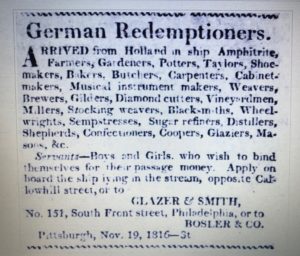 Over five years ago now I wrote the last of a few posts on the question of cream beer. It co-existed with cream ale and Imperial Cream Ales and all the other creamy drinks. I traced it from Ohio in the 1840s back to NYC and Pennsylvania in the 1820s. It has been referenced as a predecessor to Kentucky Common. It was a thing until it wasn’t:
Over five years ago now I wrote the last of a few posts on the question of cream beer. It co-existed with cream ale and Imperial Cream Ales and all the other creamy drinks. I traced it from Ohio in the 1840s back to NYC and Pennsylvania in the 1820s. It has been referenced as a predecessor to Kentucky Common. It was a thing until it wasn’t: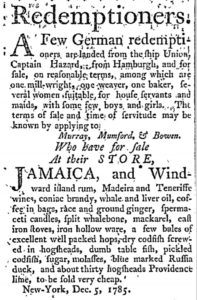 So much pleased was I to come across that notice up at the top from the Pittsburgh Weekly Gazette of 19 Nov 1816. A notice for the sale of indentured servants, or German Redemptioners. To the right is another notice for Redemptioners from New York City in 1785. No brewers were mentioned in this group unlike the notice from thirty one years later. According to Wikipedia, redemptioners were continental European immigrants in the 18th or early 19th century who sailed most often to Pennsylvania by selling themselves into indentured servitude to pay back the shipping company for the cost of the ticket. Including brewers.
So much pleased was I to come across that notice up at the top from the Pittsburgh Weekly Gazette of 19 Nov 1816. A notice for the sale of indentured servants, or German Redemptioners. To the right is another notice for Redemptioners from New York City in 1785. No brewers were mentioned in this group unlike the notice from thirty one years later. According to Wikipedia, redemptioners were continental European immigrants in the 18th or early 19th century who sailed most often to Pennsylvania by selling themselves into indentured servitude to pay back the shipping company for the cost of the ticket. Including brewers.


